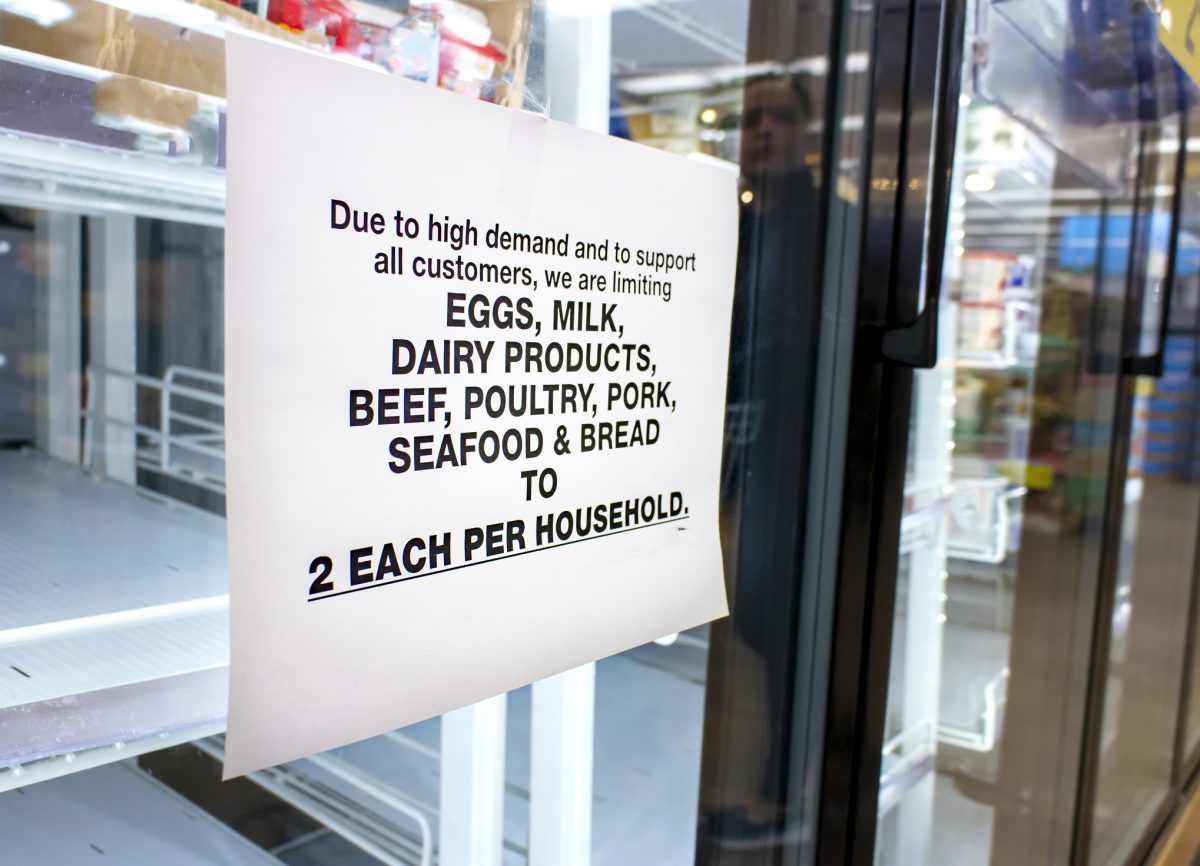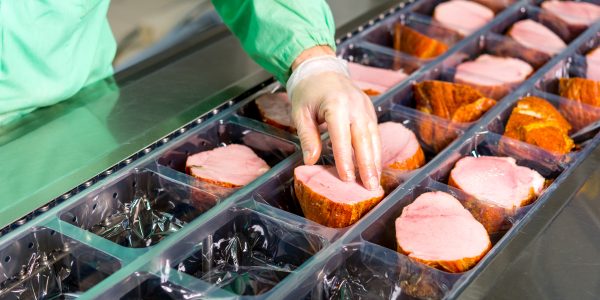
During the first few weeks of the COVID-19 pandemic, shocks to supply and consumer stockpiling led to limited availability of common food items on grocery shelves. More resilient food supply chains would limit the severity of these disruptions in the future. Credit: Frank Armstrong|Dreamstime.com.
The COVID-19 pandemic expanded our everyday vocabulary to include words like “PCR test” and “supply chain.” Economists and the general public alike wondered what it would take to make those supply chains more resilient to external shocks—not just a pandemic but also military conflicts like the Russia-Ukraine war and extreme weather events like this summer’s heat waves, wildfires and floods.
To help answer this question, assistant professor Jeff Hadachek and colleagues developed a mathematically rigorous framework for modeling shocks to food supply chains, an especially relevant example. This allowed them to evaluate different policies aimed at boosting their resilience.
“Researchers had studied how food supply chains in normal times responded to the concentration of agricultural production processes during the last five decades,” says Hadachek, who joined AAE in fall 2023 after earning his PhD at the University of California, Davis. “But that framework had not yet been extended to modeling major shocks from extreme events.”
The new study focused on a closed economy without international trade since almost 90% of U.S.-consumed food is produced domestically. The researchers used meat as a specific example, partially because it is only processed by slaughtering. (Milk undergoes multiple processing steps before it is sold as cheese.) Hadachek notes, however, that the study’s lessons apply to many other food products, especially those that remain in the same state from production to consumption.
In the case of meat, the meatpacking industry is the middleman between farmer and consumer, or the “intermediary” in supply chain lingo. The researchers combined processing and retailing into a single intermediary category and developed statistical models to simulate how major shocks affect the farmer-middleman-consumer supply chain. Next, they compared the performance of four different policies for mitigating those shocks on the simulated data.

The researchers found that the first policy—increasing competition among intermediaries—improved the resilience of most markets, making it a win-win for farmers and consumers. A real-world example is the U.S. Department of Agriculture’s Packers and Stockyard Act for meat-processing industries, which prohibits manipulating prices, restricting the flow of foods and creating any monopolies. This 1921 law, says Hadachek, has been an effective tool for combating anti-competitive practices of food intermediaries for many years.
The second policy encouraged the entry of new processors. The USDA used this tool in 2021 by providing $500 million to support the launch of new meat and poultry processing firms. The analysis showed that this strategy only worked well in markets with “imperfect competition.” The researchers measured the level of competition on a scale of 0 (perfectly competitive market) to 1 (pure monopoly). This means processors have no control over prices (0) or can set prices at will (1). Market power—the ability to reduce capacity in order to raise prices—ranges from low to high in these settings.
Most U.S. food markets, says Hadachek, are in the 0.15 to 0.25 range, meaning that processors exercise 15-25% of the market power they would have under a monopoly. The fact that the performance of the second policy was highly dependent on the level of intermediary market power was one of the study’s key findings.
The third policy was the introduction of anti-price-gouging laws, which are determined at the state level in the U.S. An example is California’s spring 2020 executive order to cap price increases for eggs at 10%, relative to average prices before the state declared its COVID-19-related emergency. The researchers found that restrictive price caps were more likely to cause product shortages and could be harmful in highly competitive markets, another key finding of the study. However, they performed much better in less competitive markets with higher processor market power.
The fourth policy—diversifying production into multiple regions—offered limited benefits regardless of market features. In the case of meat, the main reason is that starting new cattle farms requires substantial upfront equipment, building and labor costs that reduce the efficiency of meat production more than they improve resilience. This tradeoff between efficiency and resilience was also observed for the third policy and is typical for many supply chains.
“Fruits and vegetables that are grown exclusively in California are another example,” says Hadachek. “If a drought wipes out a fraction of California’s production, other states could make up for that loss, but this reduces market efficiency if both lines of production are maintained in normal times.” For consumers, less efficient production lines result in higher prices and greater fluctuation in shelf availability. Factors that boost efficiency include mechanization and the development of robust transportation networks, adds Hadachek.
The study’s take-home message is relevant not only to researchers but also farmers and consumers: Stay flexible. “Consumers should be willing to substitute beef with chicken or pork, and farmers should avoid being pidgeon-holed into specialized facilities,” says Hadachek. An example of the latter is that some California farmers produced lettuce only for restaurants and others only for grocery stores before the pandemic. The restaurant-specific producers, who struggled greatly during COVID-19, now know how to switch between multiple intermediaries.
“U.S. food supply chains were generally pretty resilient with most products for most consumers being back on the shelves six to eight weeks after March 2020,” says Hadachek. “But our study and others highlight the importance of being as flexible and prepared as possible because future shocks may be different and could cause more disruption.”